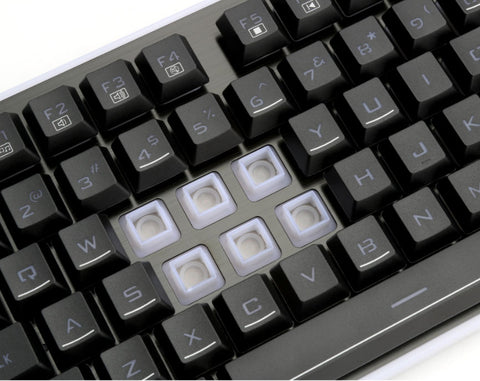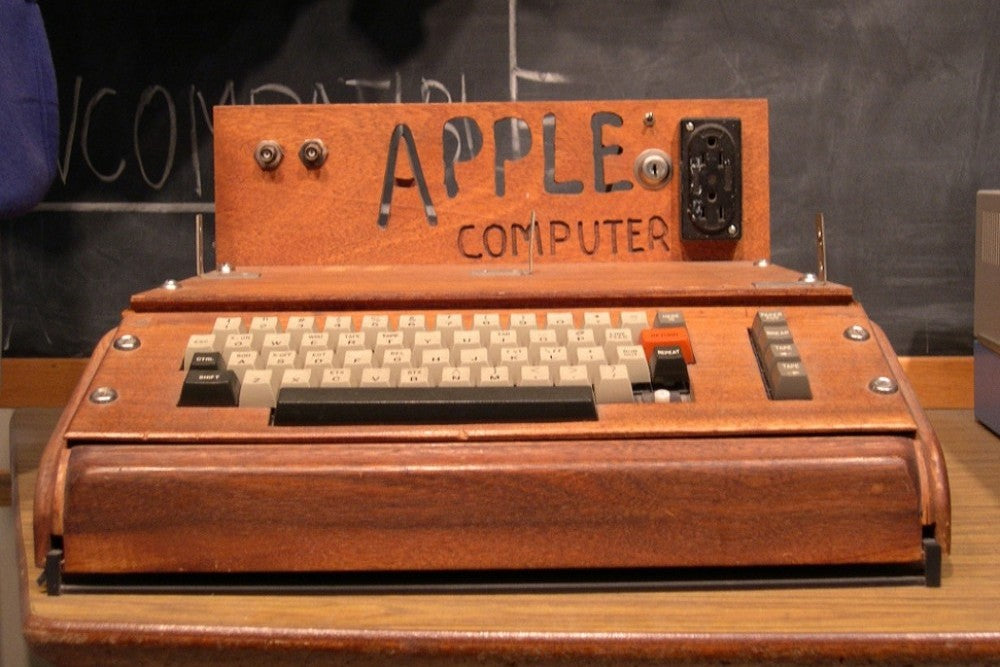In less than a century, computer technology has experienced a vertiginous and hardly achievable change. In addition to creating ever more powerful PCs and ever more efficient software and hardware, the peripherals we use on a daily basis have also not evolved, without having remote too far from the base of their original design.
In this article, we propose you to review the different types of keyboards during history.

Commodore 64
Our computers experienced a gradual evolution, and the first functional devices were far from looking like PCs currently being used. Indeed, in its early years, the computer did not yet have miniaturized components, and then had a gigantic shape. As a result, it was not yet intended for individuals.
Personal Computers (personal computers) arrived later, and began to have a much more modest template. It was the same for the accessories supplied with. Thus, the first keyboard that was really popular and globally used was the Commodore 64 (C64 for the intimate). More specifically, the Commodore 64 was actually a real personal computer with a graphic chip (capable of supplying 8 sprites and 16 colors), and a SID sound chip with three voices.
With such features, the Commodore 64 was then the most optimized computer for the game. The publishers were numerous to exploit his capabilities and to expand the ludoth library associated with this computer, so that the latter was the one who proposed the library of the most important games of the time.
Commodore Business Machines started shipping the Commodore 64 in September 1982 at the price of about $ 595. For the time, and given the advanced technology embedded by the device, this price was considered to be quite reasonable. As a comparison, his competitor, Apple II, was sold around $ 1,300.
This price policy then was part of Jack Tramel's philosophy (the C64 designer) to put computers on the market accessible to all. You might then be surprised to learn that the Commodore 64 holds the world's best-selling personal computer record, according to the Guinness Book of Records. Indeed, nearly 17 million units were sold according to the 1993 "Commodore Annual Report".
Even if the C64 is actually a personal computer, and it is not proper the first keyboard of history, it is still the one who has made it possible to popularize this type of device.

Mechanical keyboards
The first mechanical keyboards were used in the 80s. In terms of operation, know that the technology used by our contemporary mechanical keyboards is essentially based on the same technology as the first models out.
It relies on a rather simple operating principle called Buckling Spring: When you press a key, a spring below the latter competes to the point of exiting its axis brutally. The lateral clearance of this spring operates a switch, allowing to send an electrical signal to display the desired character. This mechanics has largely been popularized by IBM from the 1980s.
The Cherry brand then implemented another mechanical alternative using MX type switches. These switches were divided into several subcategories, with each of the different properties. You can then distinguish Cherry Mx Brown, Cherry MX Black, Cherry MX Clear, Cherry MX Blue and Cherry MX Red.
Again so far, the vintage side of the mechanical keyboard continues to appeal to many PC users, especially for "clicks" that are heard every time you press. If the mechanical keyboard continues to know so much success is because it offers several advantages.
- Practical touch back
First, this technology makes it possible to do fewer typing faults. This is the main reason why the editors prefer to use a mechanical keyboard. Indeed, the mechanism of this keyboard returns a precise touch signal to the finger, thus avoiding forgetting a letter following a striking that has not been recorded.
At this touch return adds a sound return (the famous "click") that confirms the typing. In terms of sensations, the mechanical keyboard can be compared to a typewriter, but in a little less noisy.
- Comfort
Write with a mechanical keyboard is much more satisfying than writing with a basic keypad. Note also that we generally suffer less wrists and phalanges with a mechanical keyboard, because the fingers get tired less. It then becomes possible to tap longer without feeling pain, unless you are already suffering from a real medical problem.
- Durability
Thanks to the technology used, the keys of a mechanical keyboard are able to support hundreds of millions of pressures. No risk so your keyboard drops you after a few years after intensive use. The responsiveness and feeling of typing will also remain the same, even after several years.
In case you break one of your keys, you do not have to replace the entire keypad. Indeed, you can content yourself to replace only the faulty key, since it is possible to buy the keys to the unit.

Membrane keyboards
The first membrane computer keyboards were born in the 1980s. Originally, they were made of polycarbonate. This flexible material, although functional, had the disadvantage of being poorly resistant. This problem has since been solved, and the membrane keyboards are now made up of several polyester layers (PET type) printed.
These layers of polyester, in addition to creating the keyboard decor, are also the different circuits of the keyboard. When you press a key, a first membrane (the one that includes the keys) will be deformed, which makes it in contact with a membrane located below (that which comprises the circuit board). An electrical connection is then established between the two membranes, which makes it possible to obtain the desired code.
The membrane computer keypads are therefore essentially distinguished from mechanical keyboards that they are flexible. They are also much quieter, because they are not mechanical.
The membrane keyboard is currently the most common type of keyboard, and its aesthetics can vary considerably. You can find on the designer and original models, like the Bamboo wireless keyboardBamboo Electronics for example, or made with other woods.

Custom mechanical keyboards
Nowadays, computers keyboards have become devices all that is more common. The membrane keyboards are the most common, but the mechanical keyboards continue to have a strong presence on the market. Moreover, there is a trend that makes more and more followers: it is the acquisition or construction of custom mechanical keyboards, or more commonly called "Custom mechanical keyboards".
As the name suggests, the Custom keypad allows you to have a fully custom device and perfectly adapted to your needs. For example, a web editor who wants to have a keyboard allowing him to optimize his typing speed will have a custom Mechanical keyboard totally different from a gamer wishing to have a device allowing him to boost his performance.
Many parameters can thus be modified, such as keyboard size, keys (with or without numeric keypad, for example) as well as their provisions, backlighting, type of USB connectivity etc.

The 5 pounds essential to rethink its interior decoration
Why choose a mechanical keyboard?